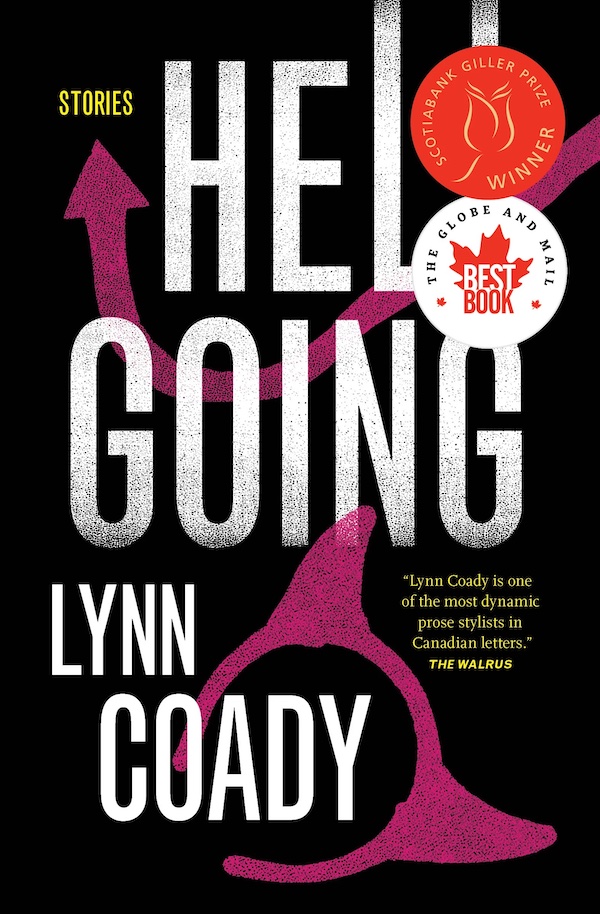Hellgoing
By Lynn Coady
House of Anansi
240 Pages, $20.00
Lynn Coady’s collection of short stories takes pleasure in uncertainty, teasing a reader with twisting plots and characters entangled in miscommunications, errors, and snap judgements.
These nine stories detail the lives of people always in the wrong place at the wrong time, including a magazine writer certain that everyone’s alcoholism has the same meanings as her own; a memoirist trying to assert a different identity through her overlooked fiction; a nun counselling a young religious fanatic hospitalized for an eating disorder; and a book publicist attempting to end an affair, manage an ostentatious author’s events, all the while avoiding terrible news about her father’s health. Throughout, Coady captures the age of irony, “an age where to be an aficionado is to find yourself foolishly situated in the world. Where to care a great deal about something . . . is to come across as a kind of freak.”
The book thrums with anxiety—the anxiety of (dis)connection. Transfixed by the impossibility of overlap, of right place / right time, Coady’s collection is not a staunch proclamation on the value of language and expression—instead, something more like a riddle that never arrives at an answer, offering pleasure in the discomfort of people at cross-purposes; a kind of messy realism that can be both rewarding and, at times, challenging in its hesitance to give a reader certainty.
As many of the stories are set in the world of writing—a world that can be fraught with rejection and misunderstanding—the collection seems to offer a meditation, or perhaps an anti-meditation, on writing and publishing itself. Is writing a process of crafted illusion, a self-conscious performance, or is it a vehicle toward earnest truth-telling? Coady’s collection dramatizes this conflict between irony and earnestness, landing somewhere in the middle. When Sara, the overlooked fiction writer, is asked to read from the very memoir that made her famous—a memoir that “in Sara’s opinion, [had] no particularly well-written sections”—she becomes “fascinated . . . by what was happening in the pages,” pulled into a matrix of feeling that offers momentary magic and release from irony’s arch façade.
The final story, “Mr. Hope,” seems a symbolic origin for the collection, detailing a child’s fall from naivety, her loss of trust in goodness, as she experiences sexual assault, bullying, and an oppressive teacher. Giving an answer to this age of crisscrossed connection, Coady takes us back to the beginning: a spiral from vulnerability to armoured irony. And in revealing this singular story of how we arrived here, this era of disjunction, Coady thoroughly entraps me with her words.
—Karine Hack














